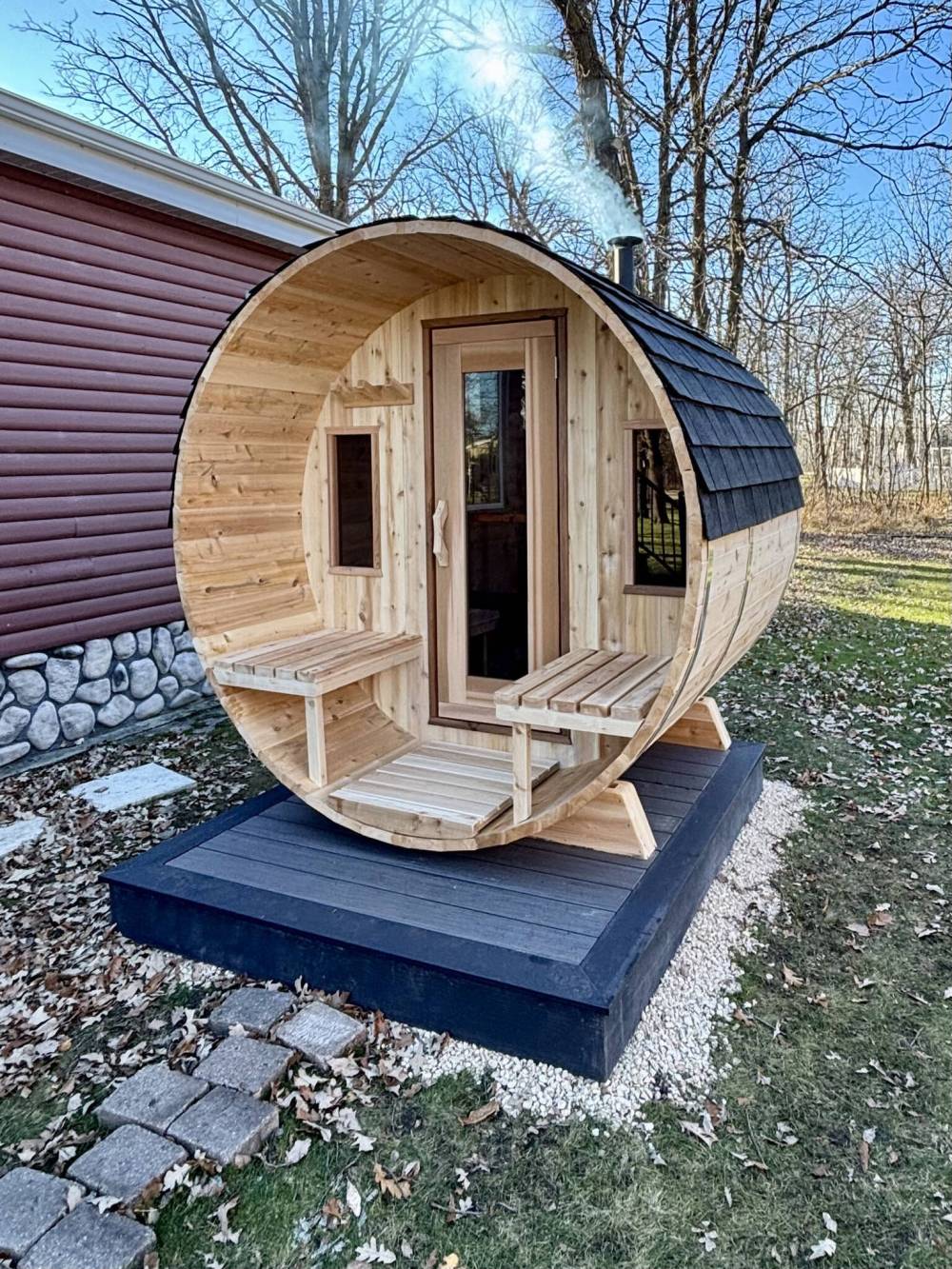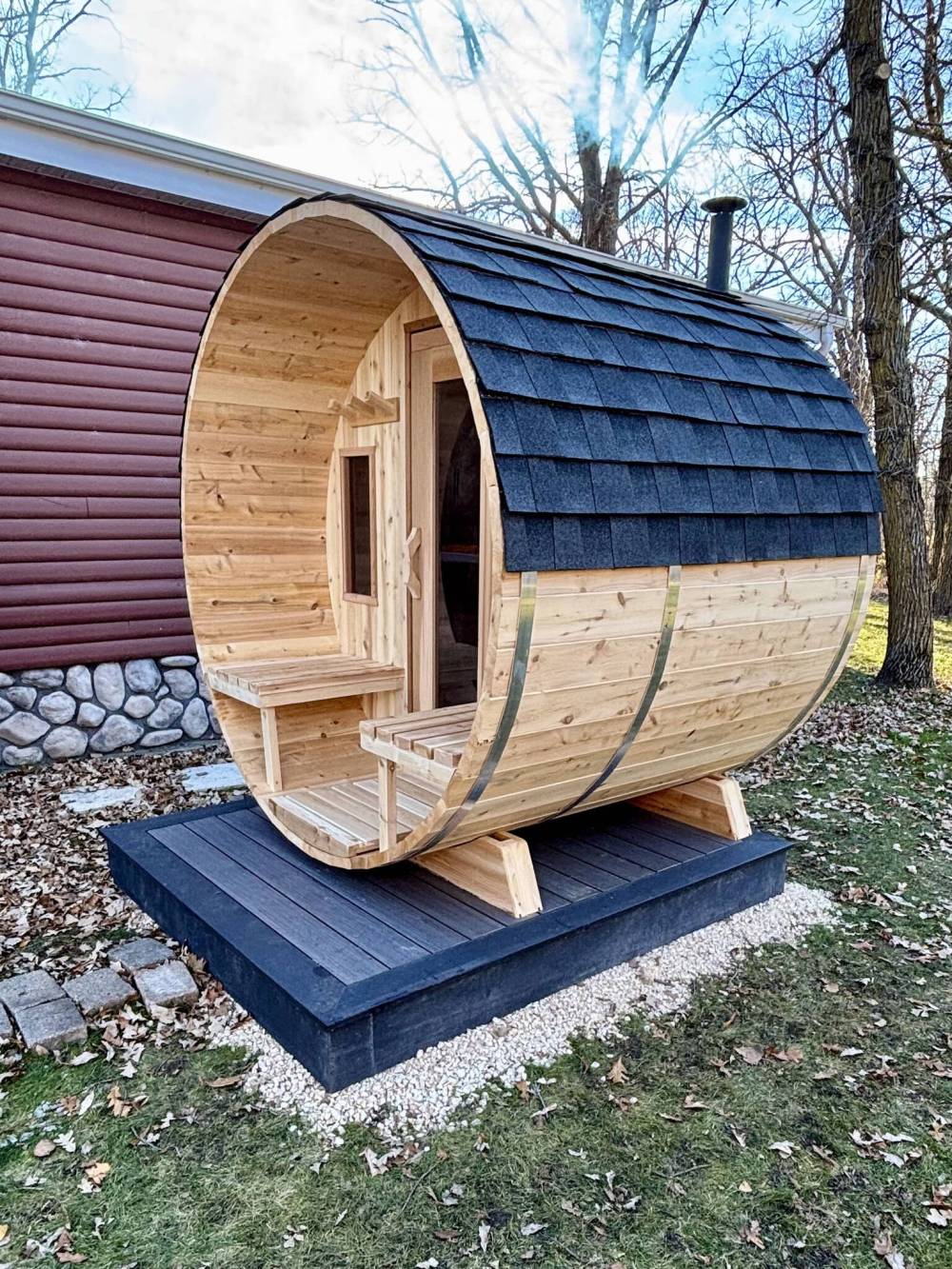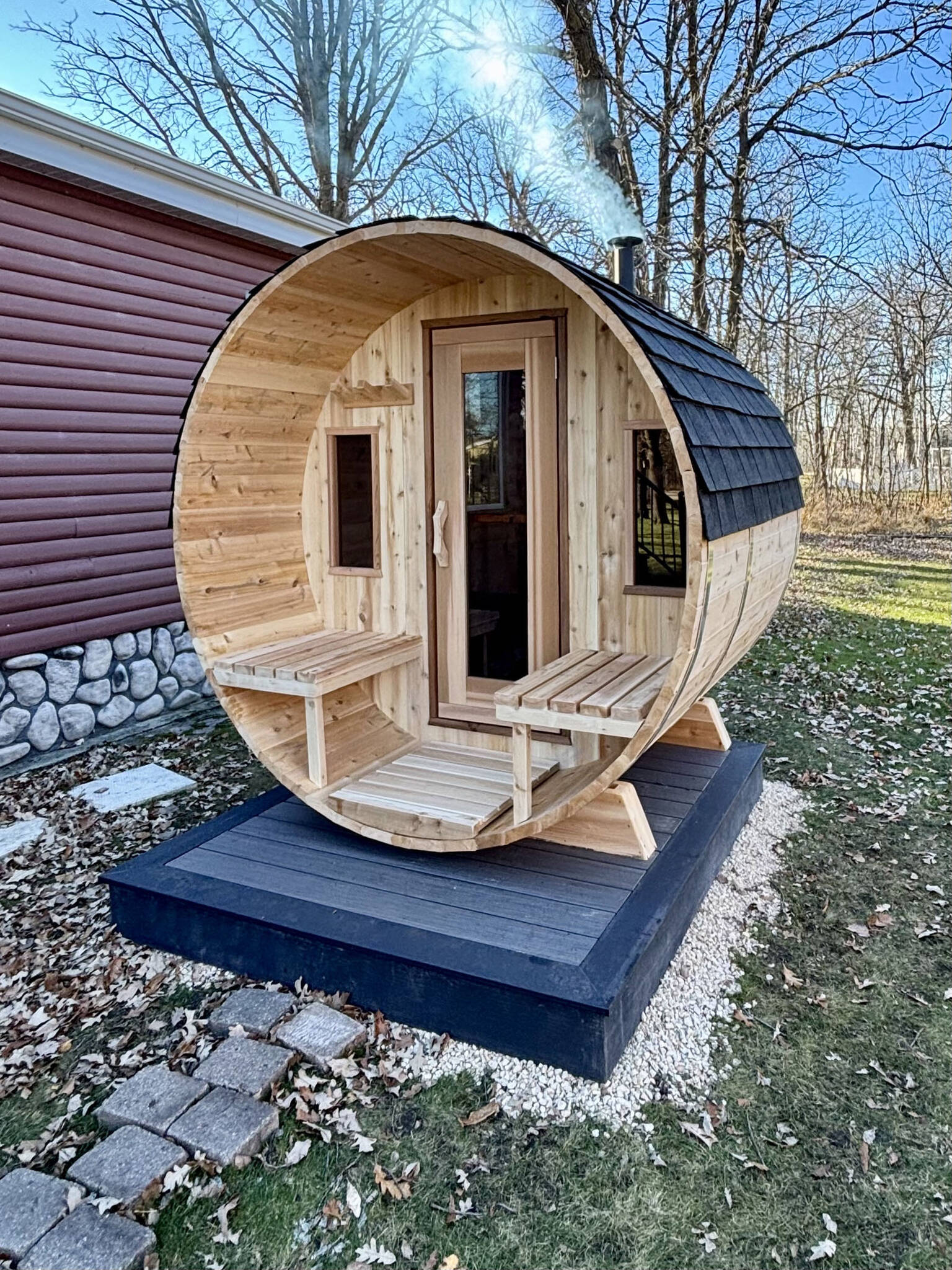As attractive as this sauna looks, I have to admit that I didn't build it – the homeowners purchased a kit from Sauna Central and installers from that company assembled the sauna on site shortly after delivery. Still, the approximately 1,200-pound sauna needed a stable platform to sit on, and that's where I came into play.
After completely remodeling their porch earlier this summer, the homeowners decided to add a sauna to the property. After extensive research, they decided to purchase a small two-person model that could be set up on site next to the porch steps.
Rather than building the sauna structure on the existing patio stones next to the front steps, it was decided that the sauna would be more suitable being recessed behind the stairs. This required the introduction of a suitable rigid platform that can support the weight of the structure.
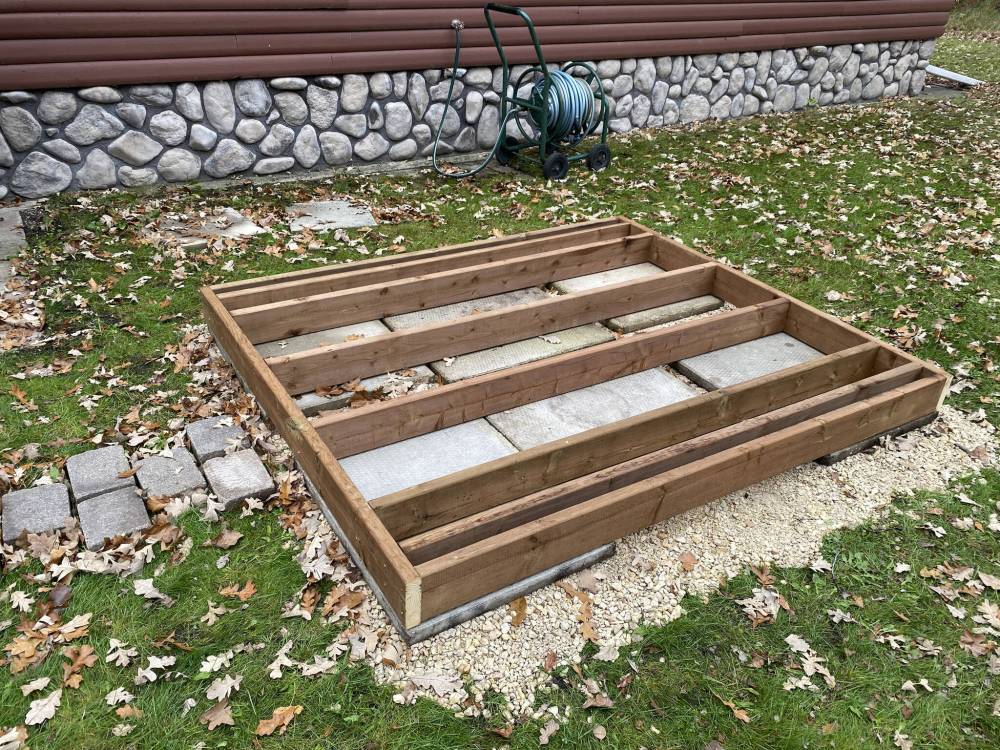
After a brief conversation with the homeowner and based on the supplier's recommendations regarding the size of the sauna, a minimum 72″ x 72″ platform was required. Further discussion revealed that a 12-inch front edge could serve as a step to the front access to the sauna.
After the earlier completion of the veranda, which features a two-tone design made of gray composite panels, there was a fairly generous pile of leftovers. In the spirit of cohesion, the homeowner hoped there would be enough composite left over to decoratively cover the upcoming sauna platform, which would be framed with two-by-six treated lumber.
After a few calculations and the homeowner confirming the lengths of composite stacked behind the garage, it appeared that there was just enough material to decorate a small platform—essentially a tiny, ground-level deck.
Therefore, the area selected for sauna placement was first prepared by the client with three-quarters limestone gravel, with six 24″ x 24″ diamond-shaped patio blocks arranged in a rectangular manner to give outside edge dimensions of 70″ x 82″. By framing the deck structure to this size, the composite “picture frame” along the perimeter of the platform would then overlap the end wall to expand the overall size to the desired external dimensions of 72″ x 84″.
The deck was framed so that the alignment of the beams was in the longitudinal plane, allowing the subsequent composite boards of the upper deck to remain parallel to the front access to the sauna. Furthermore, after a quick count of the lengths of available remaining boards, this was also the best use of the leftover composite material.
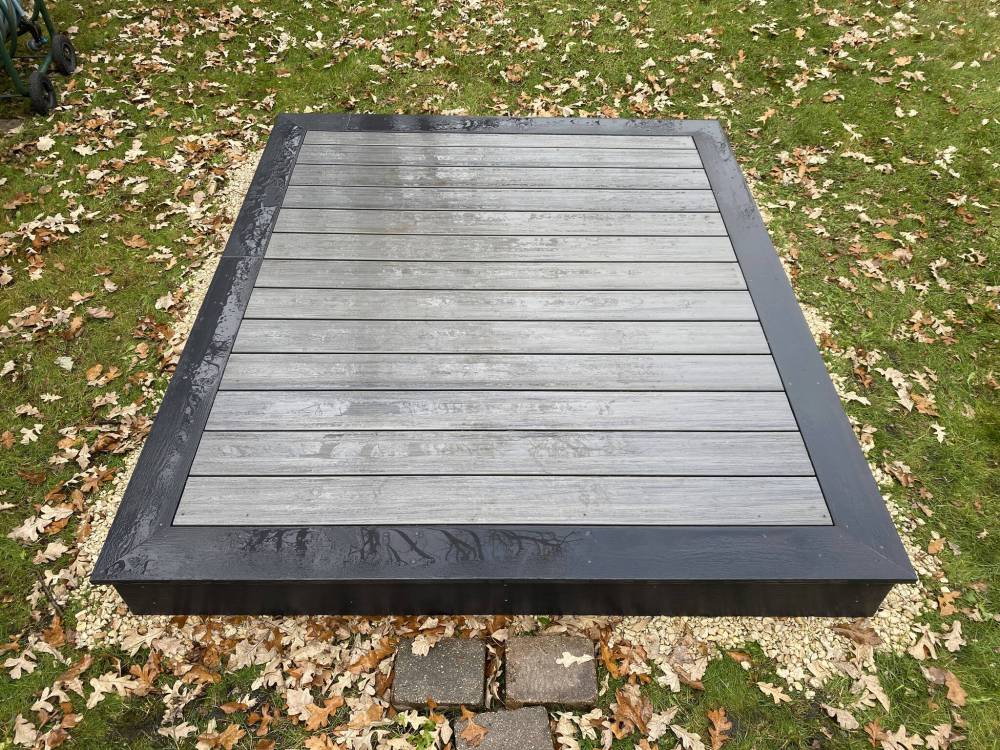
Once the platform was fully framed, the dark gray fascia was attached along the vertical sides of the structure. Color-matching solid boards with the above-mentioned overlap were then installed all around, mitred at each corner. The inner light gray grooved composite panels were then cut to the correct length to fit the picture frame and secured with hidden brackets. The final board at the other end of the tiny deck was then cut open with a table saw to achieve the required depth to complete the upper deck.
Redesigning the patio deck to match the porch gave a taste of how good the entire project would look aesthetically once the sauna was in place. To no one's surprise, the sauna installation revealed exactly that – a huge “wow factor” and the homeowners were overjoyed.
By using composite leftovers from the porch renovation, the sauna's platform required no new material other than wood, saving the homeowners additional expenses beyond the sauna itself. Luckily there was enough composite left to get the job done. And that's exactly why I always recommend that homeowners never rush to get rid of anything because you just never know when or if you'll need it.
RenoBoss.Inc@outlook.com
